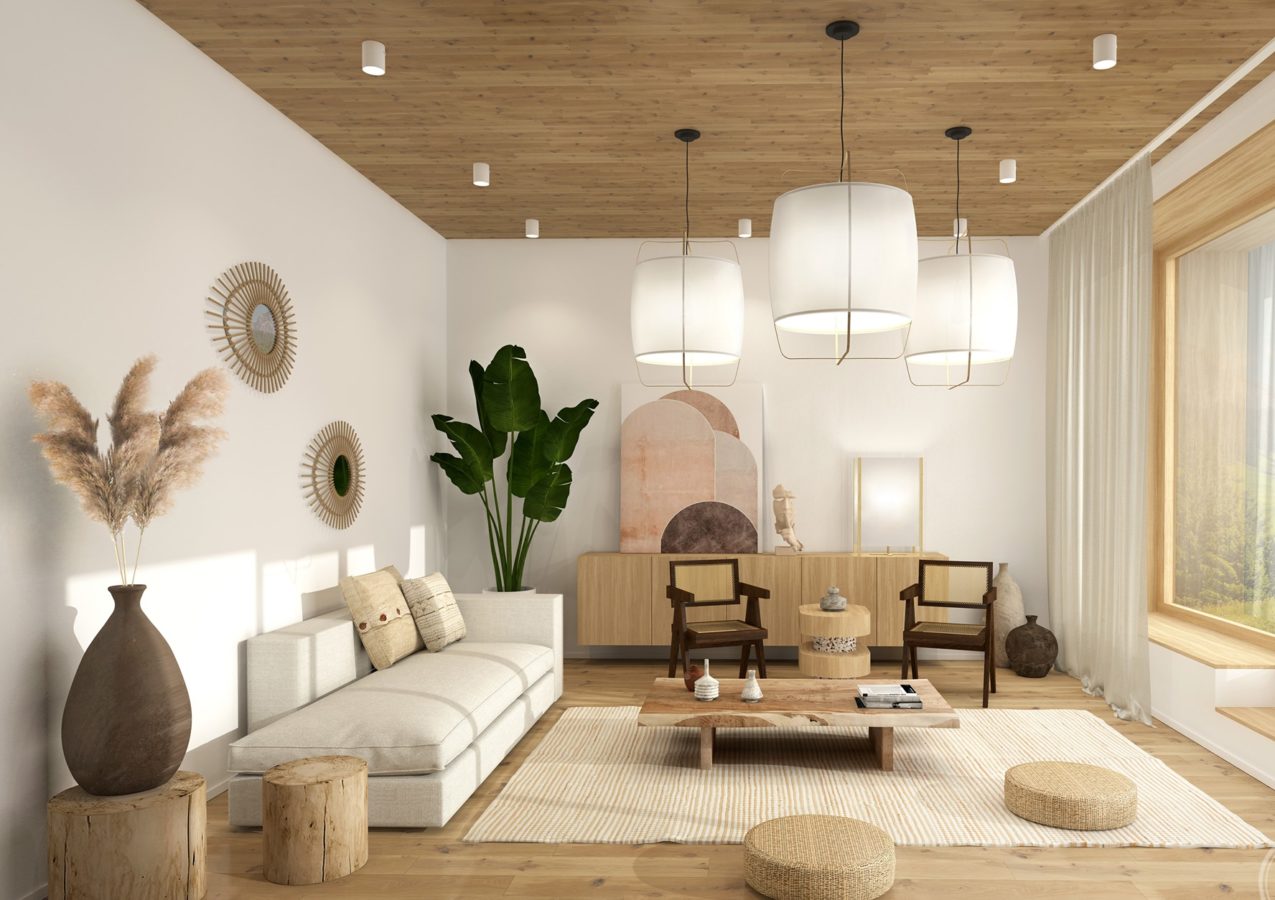
Japandi design combines both worlds to give people the best in terms of design. Japandi aesthetics and interiors are about clean lines, natural textures, and links to the outdoors, but they are functional and warm.
Exploring the features of Japandi interior designs
Color palette choices
The Japandi colour scheme is inspired by nature, using many pastel colours, which makes the atmosphere calm. These include warm whites, soft grey and gentle beiges as the base colour scheme. These are accompanied by more subdued earth tones such as terracotta, sage green and warm browns. The overall look should be as minimalist and calm as possible, and no flashy colors that may disrupt the atmosphere should be used.
Simplicity in choosing the furniture
Furniture in the Japandi context is more about simplicity, less about aesthetics, and more about utility and function. Objects are selected intentionally, and every item in the room has a specific function and brings value to the design. Furniture is hidden, thus drawing from the traditional Japanese concept of interior decoration. Durability is preferred over the number of products; people prefer to buy good furniture that will last for years.
Functional storage solutions
Organization or storage is crucial in Japandi interior designs since the style has a minimalist outlook. Pocket doors and other space saving furniture enable the owners to hide necessary items away from the open sight. Shelf systems are expected to fit the agreed interior design plan and can use natural elements and minimalistic accessories. It is easy to keep things orderly since there is a place for everything, hence the quiet environment.

Bringing in plants and greenery
Greenery is an essential aspect of japandi interior design singapore, bringing life and associating the interior with the outside world. Select plants with plain shapes, as the design and construction emphasize minimalism. Some of the plants that are good to have around include Bonsai trees, bamboo, and peace lilies. Plants are put in simple clay pots or natural baskets as an extra layer of the natural look in the interior.
Textiles and soft furnishings
Fabrics in Japandi design are selected based on the touch and functionality the material will bring into the room. Linen, cotton, and wool are used in plain patterns or colours. Cushions, throws, and rugs give the warmth and comfort needed while keeping the overall look and feel clean. No highly busy designs or vibrant colors should be adopted because they will interfere with the serene environment of the unit.
Summary
To come up with a Japandi interior, one should aim at trying to achieve class, minimalism, functionality, and style. The way is to select carefully and invest in high quality materials and basic forms that will not go out of fashion in several years. Considering these components, one can achieve a Japandi interior that will introduce feelings of tranquility into everyday life.
